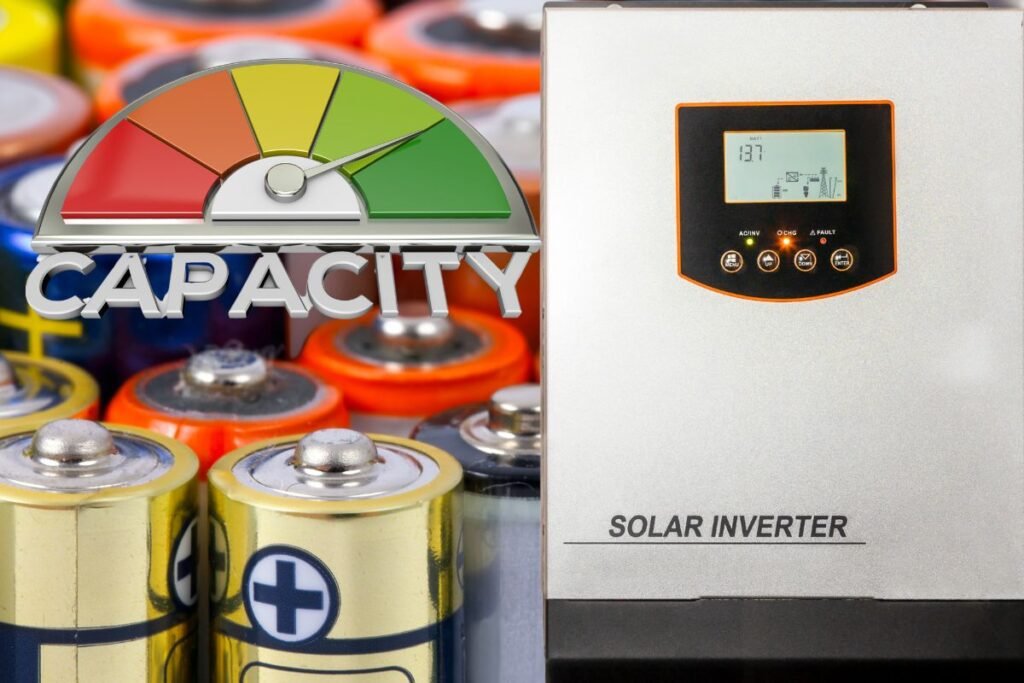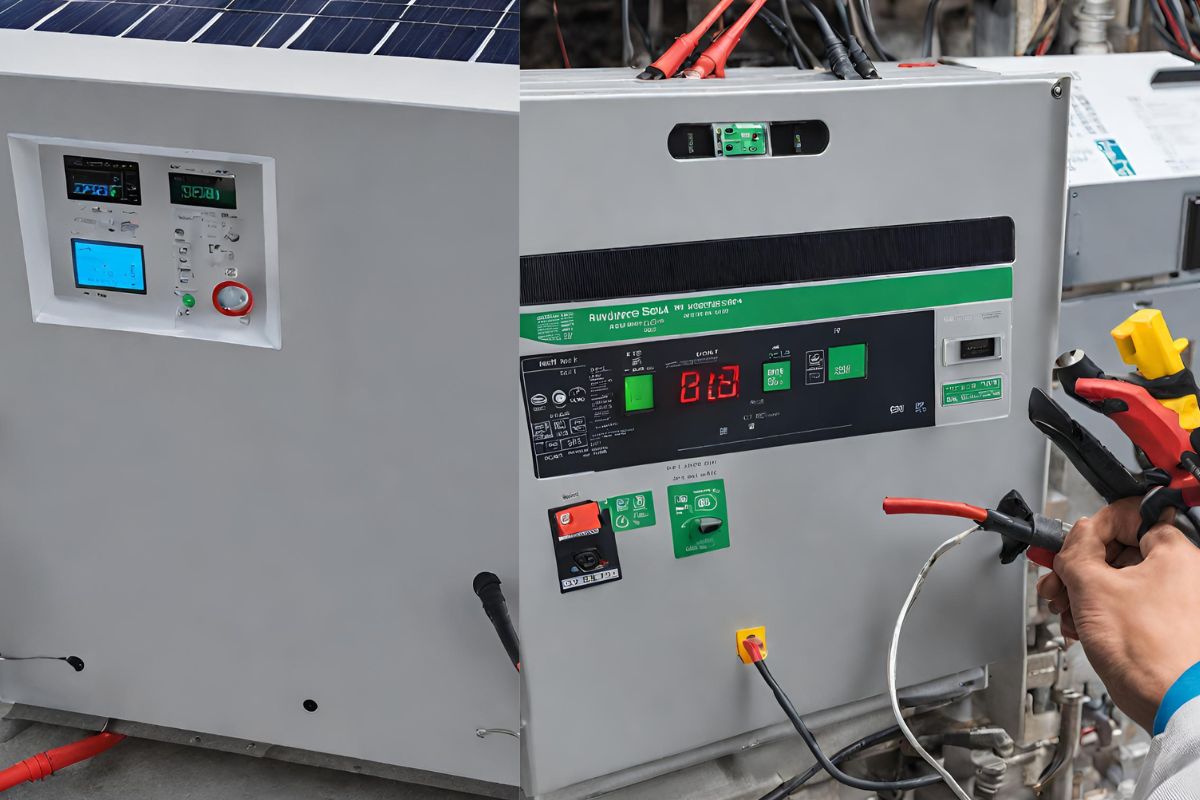Do you want to know what battery capacity size can power an inverter? If that’s all. Then, let me explain briefly. Inverter batteries come in a variety of sizes and capacities.
So, to calculate battery capacity, we multiply the hours required to constantly power your inverter by the amount of watts the inverter is rated for.
As you can see, the battery capacity may be determined depending on the actual connected load and the number of backup hours necessary.
This equals the total wattage that your inverter will draw throughout the period.
However, that is not all; you will see how everything works later in this article:
Let’s get started.
How To Calculate Battery Capacity For Inverter
Battery capacity is calculated based on the user’s power usage or estimated standby duration.
The battery’s function guarantees that the system load is used normally when there is inadequate solar radiation.
For critical loads, the system must be restored to normal operation within a few days, and the number of consecutive wet days should be considered. For common loads such as solar street lights,
It can be chosen within two to three days based on experience or requirements. Important loads, such as communication, navigation, and hospitalization, are identified within 3 to 7 days.
Example
The current consumption is 28 amps, and the duration required is 1 hour and 45 minutes, which is equivalent to 1.75 hours.
Ah pulled=28A×1.75hr=49Ah.
Since the discharge time is close to a 2-hour discharge rate, calculate the required Ah capacity from a 10-hour battery rating.
The IS specification indicates that the capacity achieved is 71.7%.
Battery capacity rated at 10 hours= 0.717/49 ≈68.26Ah.
It would help to choose a battery with a capacity of 68.26 Ah, say 70 Ah, for 10 hours.
Such a battery can also respond to longer power outages at a lower charge, 4 to 5 hours.
Inverter Battery Capacity Calculator
An inverter battery is supposed to work during power outages and blackouts. The outage duration can range from a few minutes to several hours.
However, it is customary to design a capacity discharge for extreme conditions. This automatically applies to other situations.
Formula for battery capacity calculation
Battery Capacity (Ah)= Depth of Discharge (DOD) \timesEfficiency
Load Current (A)×Discharge Duration (hours)
Note: The formula can be different based on specific factors, and efficiency and depth of discharge values may be considered depending on the application and type of battery.
Factors To Consider While Evaluating Battery Capacity:
When determining battery capacity, it is crucial to consider various other parameters that might impact battery performance and device life:
One important point to understand is that not all batteries transfer energy with the same efficiency. Some batteries have lower efficiency, which affects their actual capacity.
Temperature may diminish battery capacity.
Batteries need ventilation for better performance; they love mild-temperature environments. We can say too much heat can affect the battery performance, and even when the weather is still too cold, it can also affect the battery capacity.
Another factor that can affect the battery capacity efficiency is overcharging or allowing the battery to drain completely. This is one killer of the battery life cycle; it will degrade the battery’s long-term capacity.
Why Is Calculating Battery Capacity Important For Inverter Systems?
Calculating the battery capacity is important, though many people neglect this act. But what they don’t know is that the way you handle your battery is the way it will serve you for a long time.
So the main reason why you calculate the battery capacity is for you to know what level it is and what load it can carry easily and it ensures that you have sufficient stored energy to support your power needs during outages or when your solar panels aren’t actively generating electricity.
How Is The Battery Capacity Calculated?
To evaluate battery capacity, we must consider the discharge current and the duration of the device’s operation.
The fundamental formula for determining capacity is as follows:
Battery capacity = discharge current x usage duration.
For example, if the device has a discharge current of 2 A and will be operated for 5 hours, the battery capacity needed is 10 ampere-hours (Ah).
Common Mistakes to Avoid When Calculating Battery Capacity for Inverters
Calculating the battery capacity for inverters is important to help for a consistent power supply during outages.
8 Frequent Pitfalls To Avoid While Performing This Computation.
Overlooking the complete load: Failure to account for all of the devices you intend to power with the inverter may result in an overestimate of the needed battery capacity.
Make careful to list any appliances and technological devices.
Ignoring inverter efficiency might lead to an undersized battery capacity. Consider the energy losses that occur during the conversion from DC to AC.
Not taking into account desired autonomy: Calculating capacity without considering how long the battery needs to operate might result in inadequate capacity. Clearly state the desired autonomy duration.
Neglecting ambient temperature: Temperature influences battery efficiency. Failure to address environmental variables might result in an underestimation of the required capacity, particularly in harsh climes.
When you ignore the battery lifespan: Not all batteries have the same lifespan. Ignoring this aspect can lead to quick and costly replacements. And when you are always running a battery to zero.
Not accounting for degradation over time: Batteries lose capacity over time. Failing to consider degradation can lead to insufficient capacity as time passes.
When you don’t account for solar charging: If you use solar energy to charge your batteries, compute capacity based on solar radiation fluctuation and system efficiency.
Ignoring the depth of discharge: Fully draining the battery in each cycle might reduce its lifespan.
To increase battery life, ensure that the capacity is calculated with an acceptable depth of discharge.
Avoiding these mistakes will help you more accurately calculate the battery capacity for inverters, ensuring a reliable power supply in all circumstances.
Final Thought
Now, you have learned how to calculate battery capacity for an inverter, but you should always remember that other factors can affect the battery’s capacity.
That is why you should look beyond getting the right battery available at that time to meet your need for a bigger battery.
Other Articles:



